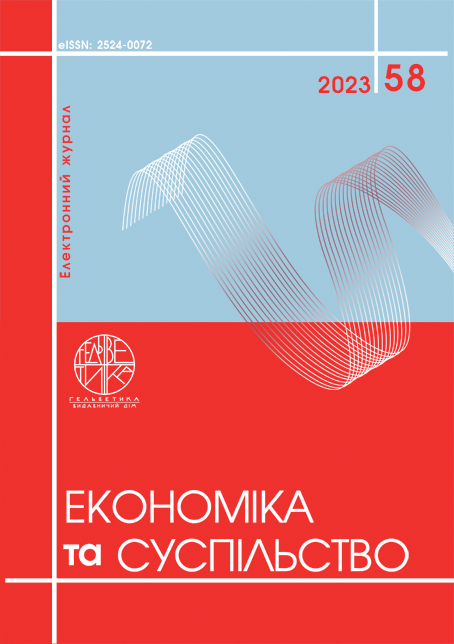COST COMPONENTS OF BIODIVERSITY OFFSETS SCHEMES DEPENDING ON THEIR TYPE
Abstract
Biodiversity offsets are economic instruments used to allow for some continued economic development whilst simultaneously delivering biodiversity objectives, such as no net loss or net gain. It is noted that first used in the United States in the 1970s to mitigate to wetlands, biodiversity offsets programmes have more recently been introduced in a number of countries. Some countries are in early stages of adoption or investigation of compensatory mitigation, while others have sophisticated and mature systems. Currently, there are different types of biodiversity offsets schemes that make it possible to take into account the different economic, environmental and social characteristics of different countries. It is therefore timely to examine what has been learned from the experience of biodiversity offsets to date, including the challenges associated with determining the cost of their implementation and how they can be improved. It is noted that the cost of implementing a biodiversity offsets schemes depends on the type of biodiversity offsets scheme. The cost of implementing a biodiversity offset scheme influences the cost of an economic development project and is an important consideration in its approval. The article considers the impact of different types of biodiversity offsets schemes on the cost of their implementation. It is noted that the scientific literature usually indicates the following main costs of biodiversity offsets include: habitat creation and restoration costs; annual payments for appropriately managed in perpetuity biodiversity; land purchase costs/compensation landowners for income foregone; transaction costs. It is concluded that this list should be supplemented with the following costs for biodiversity compensation: cost of ecosystem services lost between the start of restoration and loss of biodiversity; for voluntary biodiversity compensation schemes, schemes with off site compensation – the amount of compensation for the citizens affected by loss of biodiversity, ecosystems and ecosystem services; for compensation schemes with restoration of only priority elements (natural resources, animals, plants, ecosystem services, etc.) – cost of loss of all other components of the natural environment that were not restored etc.
References
Biodiversity Offsets: Effective design and implementation. (2016). Paris: OECD Publishing. Retrieved from http://dx.doi.org/10.1787/9789264222519-en [in English].
TEEB – The Economics of Ecosystems and Biodiversity for Local and Regional Policy Makers (2010). Malta: Progress Press. Retrieved from: https://www.teebweb.org/wp-content/uploads/Study%20and%20Reports/Reports/Local%20and%20Regional%20Policy%20Makers/D2%20Report/Translations/TEEB_D2_Druckvar_end_RUSSIAN.pdf [in Russian].
Becca M., Nathaniel C., Kelly B. (2010). State of Biodiversity Markets Report: Offset and Compensation Programs Worldwide. Washington. Retrieved from: https://www.ecosystemmarketplace.com/wp-content/uploads/2015/09/sbdmr.pdf [in English].
Baker J., Sheate W.R., Papadopoulou L., Bennett T., Payne D. and Bull J. (2013). Defra project code: WC 1051. Evaluation of the Biodiversity Offsetting Pilot Phase. Indicative Costs of Current Compensation Arrangements for Biodiversity Loss: Illustrative Case Studies. Report on Task 4. London: IEEP. Retrieved from: https://randd.defra.gov.uk/ProjectDetails?ProjectID=18229&FromSearch=Y&Publisher=1&SearchText=WC1051&SortString=ProjectCode&SortOrder=Asc&Paging=10#Description. [in English].
Tupala A., Huttunen S. (2022). Social impacts of biodiversity offsetting: A review. Biological Conservation. Vol. 267, 1-10. Retrieved from: https://www.sciencedirect.com/science/article/pii/S0006320721004833 [in English].
Baker J., Sheate W.R., Papadopoulou L., Bennett T., Payne D. and Bull J. (2013). Defra project code: WC 1051. Evaluation of the Biodiversity Offsetting Pilot Phase. Indicative Costs of Current Compensation Arrangements for Biodiversity Loss: Illustrative Case Studies. Report on Task 4. London: IEEP. Retrieved from https://randd.defra.gov.uk/ProjectDetails?ProjectID=18229&FromSearch=Y&Publisher=1&SearchText=WC1051&SortString=ProjectCode&SortOrder=Asc&Paging=10#Description.

This work is licensed under a Creative Commons Attribution 4.0 International License.


